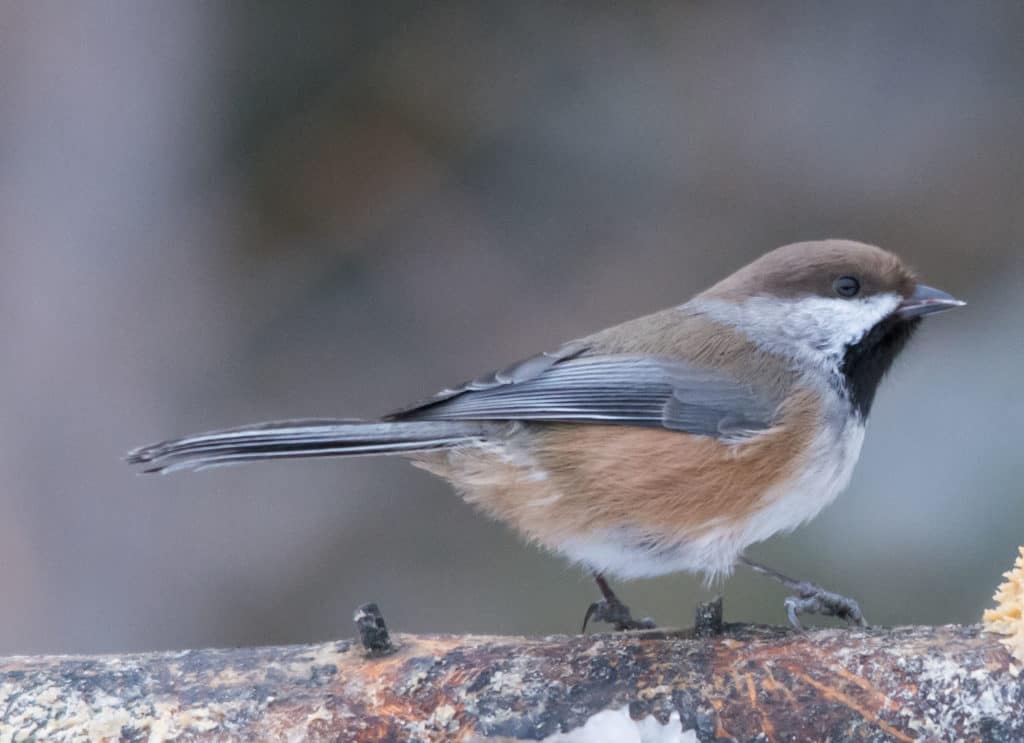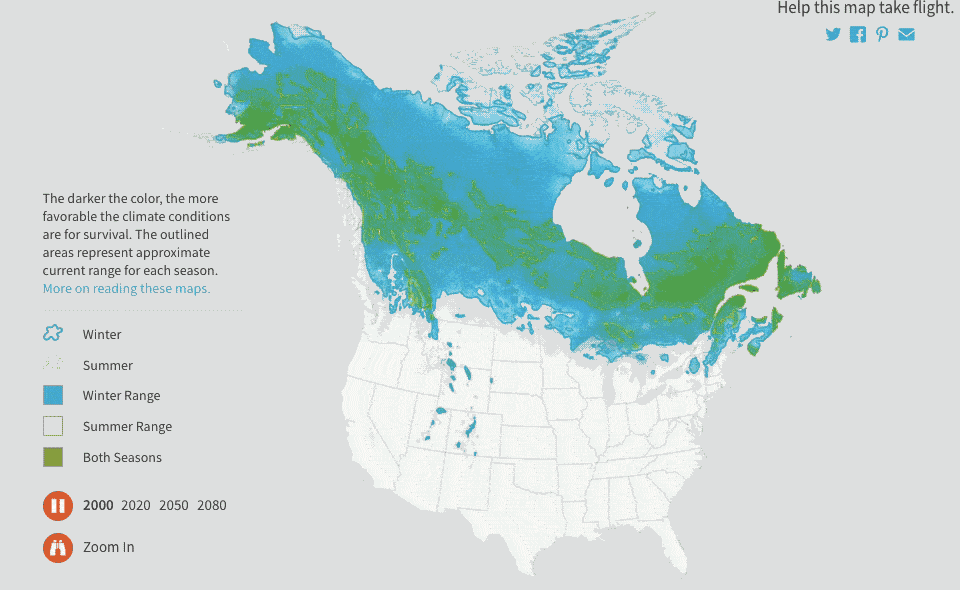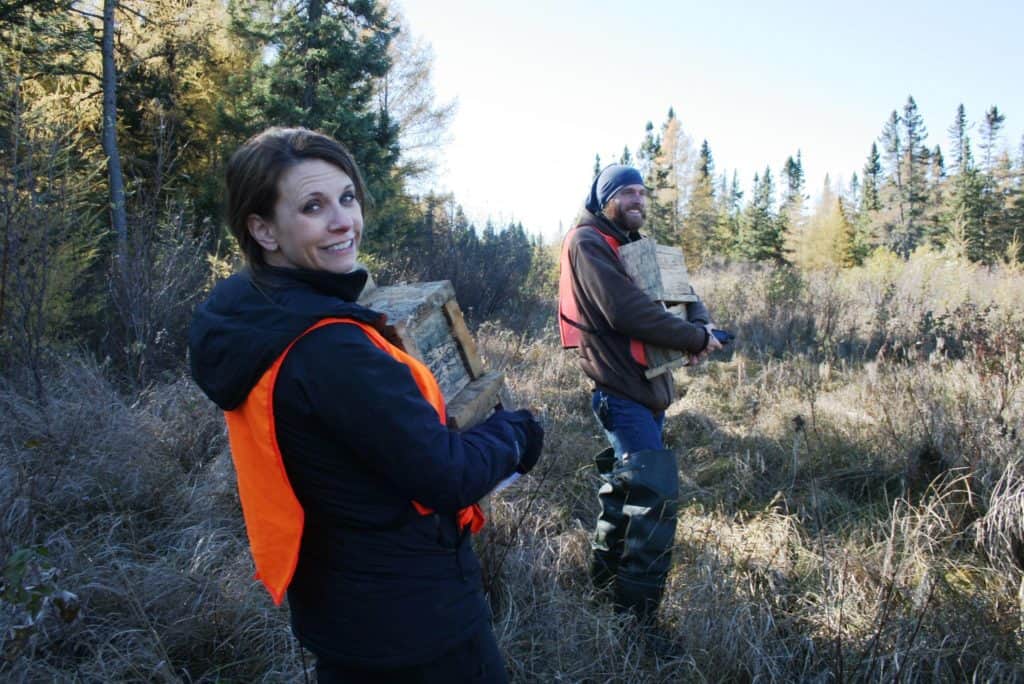
Listen to the Boreal Chickadee’s song:
This spring, some small birds with specific needs for where they nest will hopefully find a comfortable place to raise a family in some of the hundreds of special birdhouses spread across remote bogs in northern Minnesota. If they do, it could give scientists a chance to better understand the birds, and the reasons they seem to be disappearing.
Boreal Chickadees are most at home in Black spruce-Tamarack bogs, nesting almost exclusively in woodpecker-created cavities, often in tamarack trees. Wet ground and thick forest make such areas difficult to access for people, but prime habitat for the birds.
“This is a rather unique set of studies,” project supervisor Dr. Marcella Windmuller-Campione, in a story from the University of Minnesota-Duluth’s Natural Resources Research Institute (NRRI). “This ecosystem is a large piece of our Minnesota landscape but there’s so little research done there.”
The environment makes for difficult work, but scientists are visiting these bogs during a state-funded study of Boreal Chickadees and their future in Minnesota.
Two-part problem
Like moose, loons and other iconic northern Minnesota species, these birds on the southern edge of the boreal forest in northeast Minnesota may have a hard time holding on as the climate changes. Bird advocacy group Audubon predicts the Boreal Chickadee will lose 60 percent of its summer range and 25 percent of its winter range as the climate warms.

In addition, rapid deforestation is reducing their available habitat. Logging is part of the issue, but so is expansion of the Eastern larch beetle, which is killing thousands of tamarack trees. Audubon says: “Recent population declines are thought to be due to logging… Audubon’s climate model forecasts losses in both summer and winter of suitable climate space, with sharper losses in summer. Given that the species is nearly sedentary, the summertime climate will likely be the stronger driver of the Boreal Chickadee’s future range: squeezed farther and farther north in a region already under pressure from timbering.”
The birds have been listed by the state of Minnesota as a species of greatest conservation need.
Lots to learn
Better understanding of their lives is essential to protecting their population. “We don’t know very much about these birds now, so anything we can learn will be really valuable,” said Alexis Grinde, NRRI wildlife ecologist, in the institute’s story. “Studying the changes here and now will ultimately inform future management, as landscape changes continue to push north into Canada.”
The project will let researchers watch where the birds go after leaving the nest, monitoring their survival, habitat use, and general preferences during the period. It will provide important information on what types of habitat the birds are using, and what they are not.
“The goal is to find a nest, so that we can get juvenile birds and see where the adults go when they start flying,” Grinde told the Duluth News Tribune. “The question is, do they hang out here? Or do they spread out?”
The observations will help identify conservation priorities in the region, and inform the development of forest management practices to protect Boreal Chickadees.

Last fall, researchers from NRRI hung 500 birdhouses in Sax-Zim bog, north of Duluth, and another site near Bemidji. The houses are filled with sawdust to mimic their natural nest sites. The plan is to watch the birdhouses during this year’s breeding season, and attach radio transmitters to the chickadee chicks. Then, the researchers can see where they go after fledging.
The study is funded by the Minnesota Environmental and Natural Resources Trust Funds, as recommended by the Legislative Commission for Minnesota Resources.
Later this month, Boreal Chickadees in northern Minnesota will pair off and start building their nests. The female will build most of the nest, using feathers, bark, moss and other soft material and eventually lay four to nine eggs. When they hatch, the father will start bringing food to the nest, and eventually both parents will help feed the young birds. The chicks will eat and grow until they’re ready to take flight in June, and that’s when the scientists will start observing what happens next.
References
- Bog hopping for birds, NRRI, Oct. 29, 2018
- Scientists hang 500 birdhouses in Sax-Zim Bog to study boreal chickadees, Duluth News Tribune, Oct. 18, 2018
- Climate Endangered: Boreal chickadee, Audubon
- Minnesota Profile: Boreal Chickadee (Poecile hudsonica), MN Department of Natural Resources
- Species Account: Boreal chickadee, NRRI

